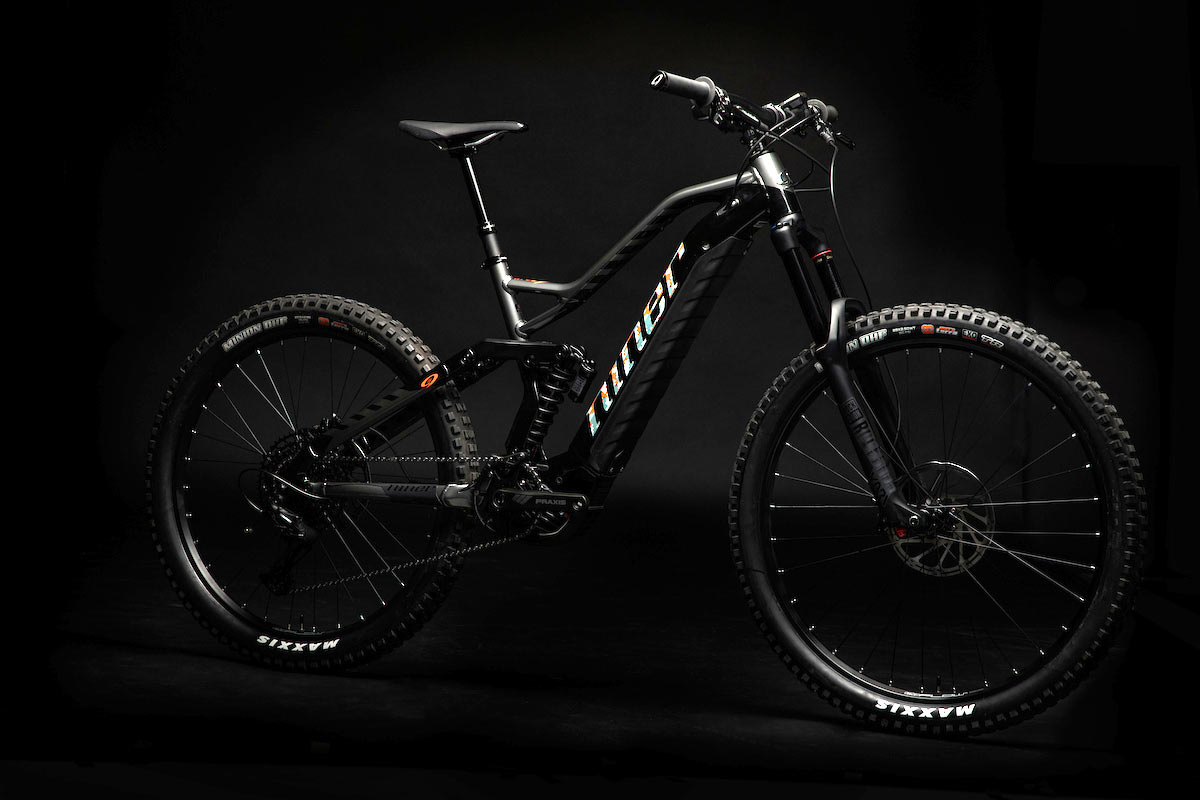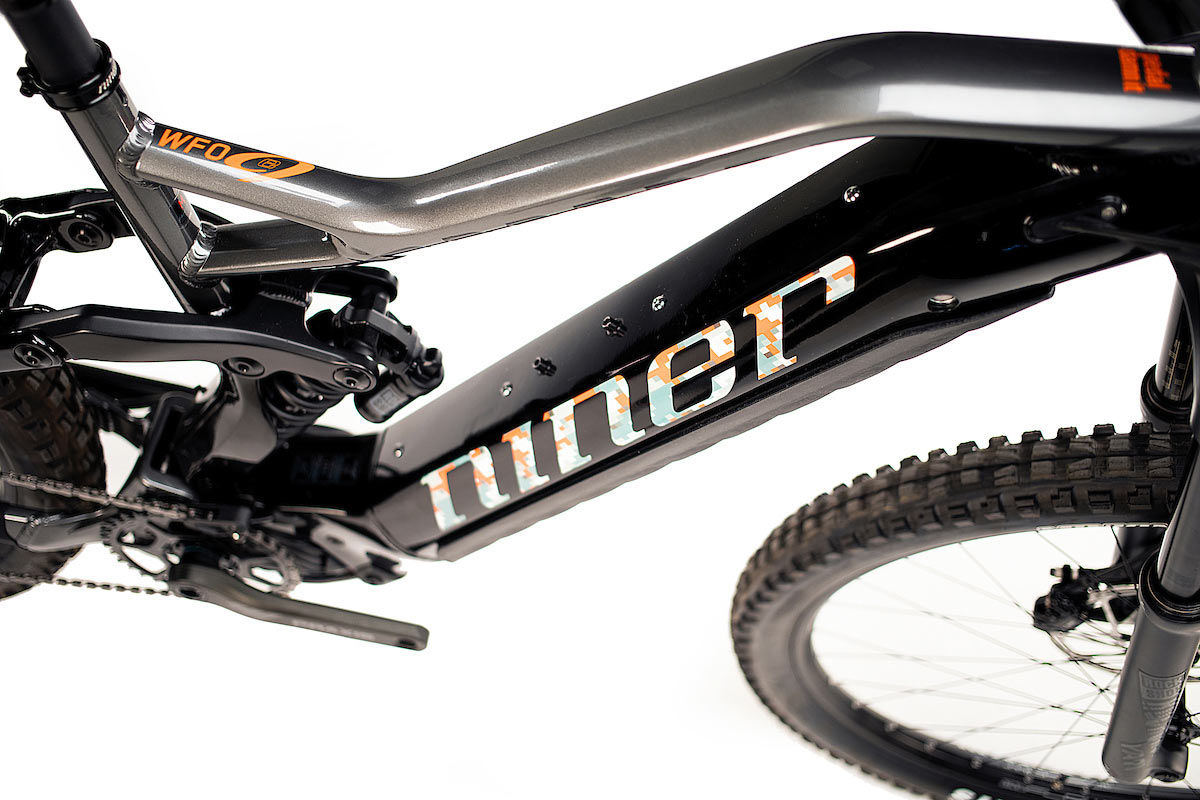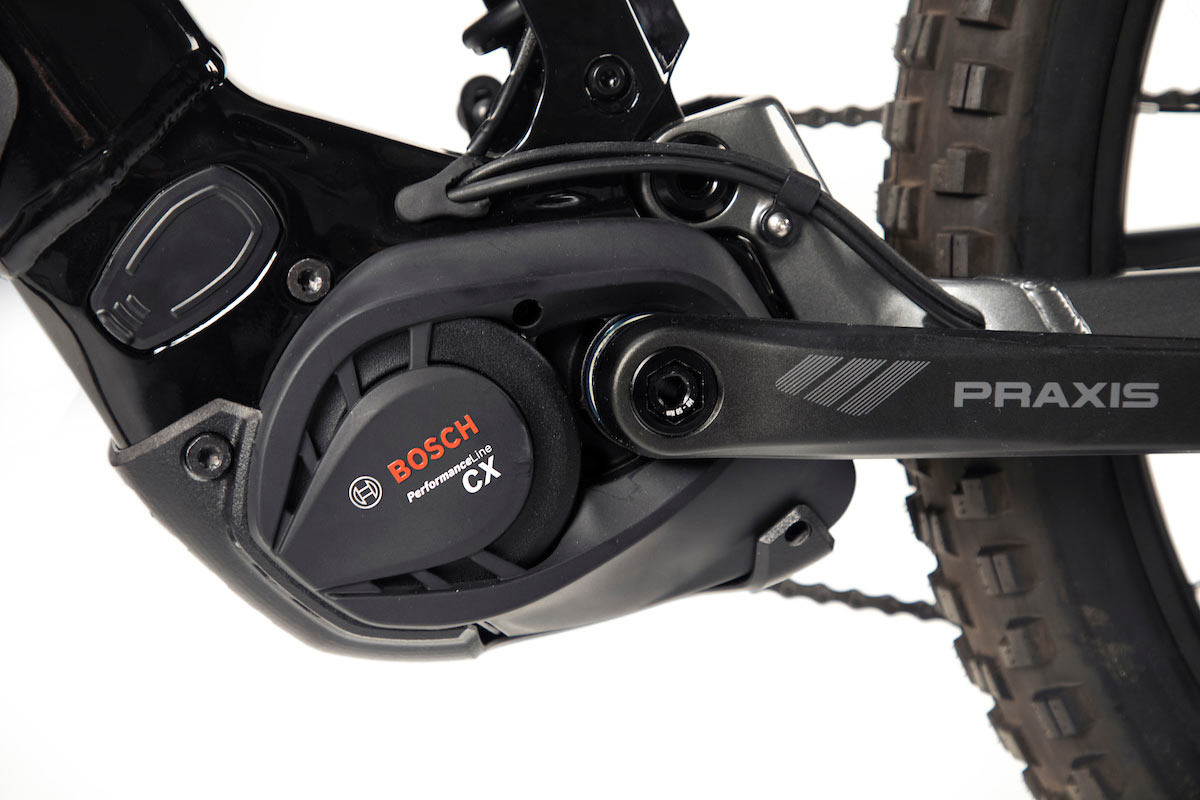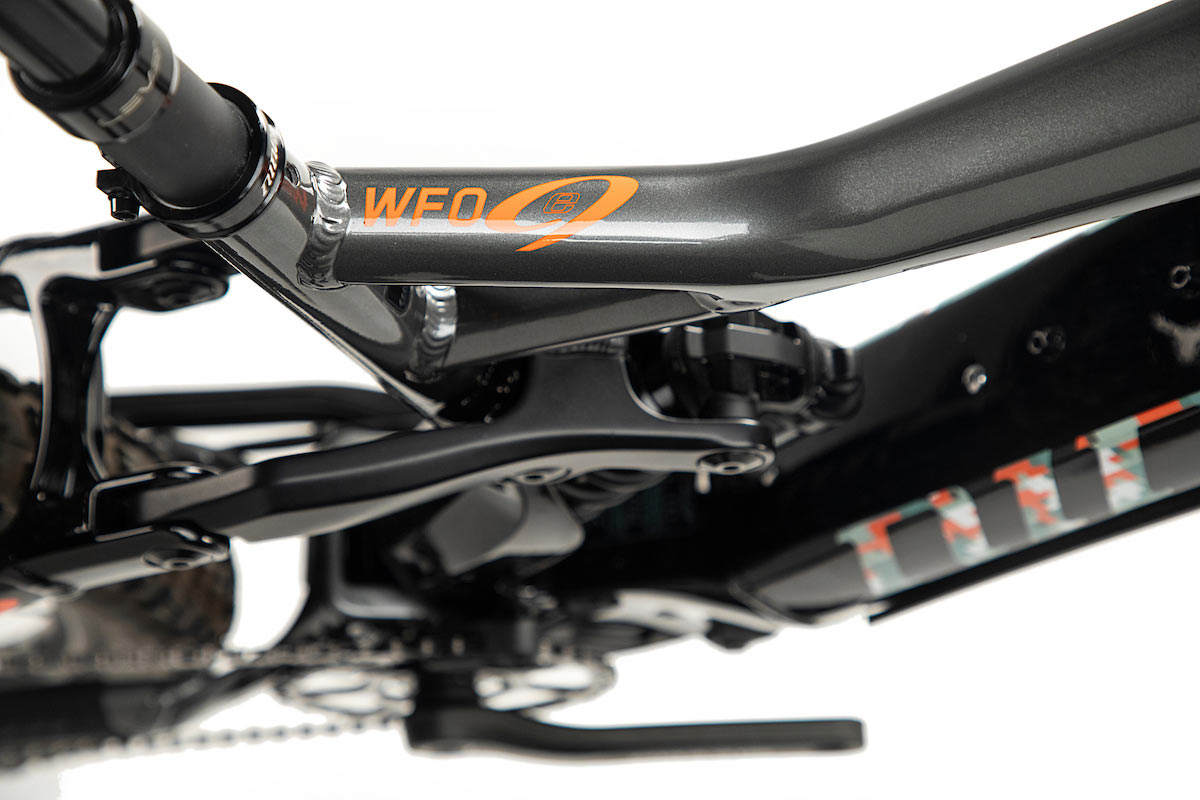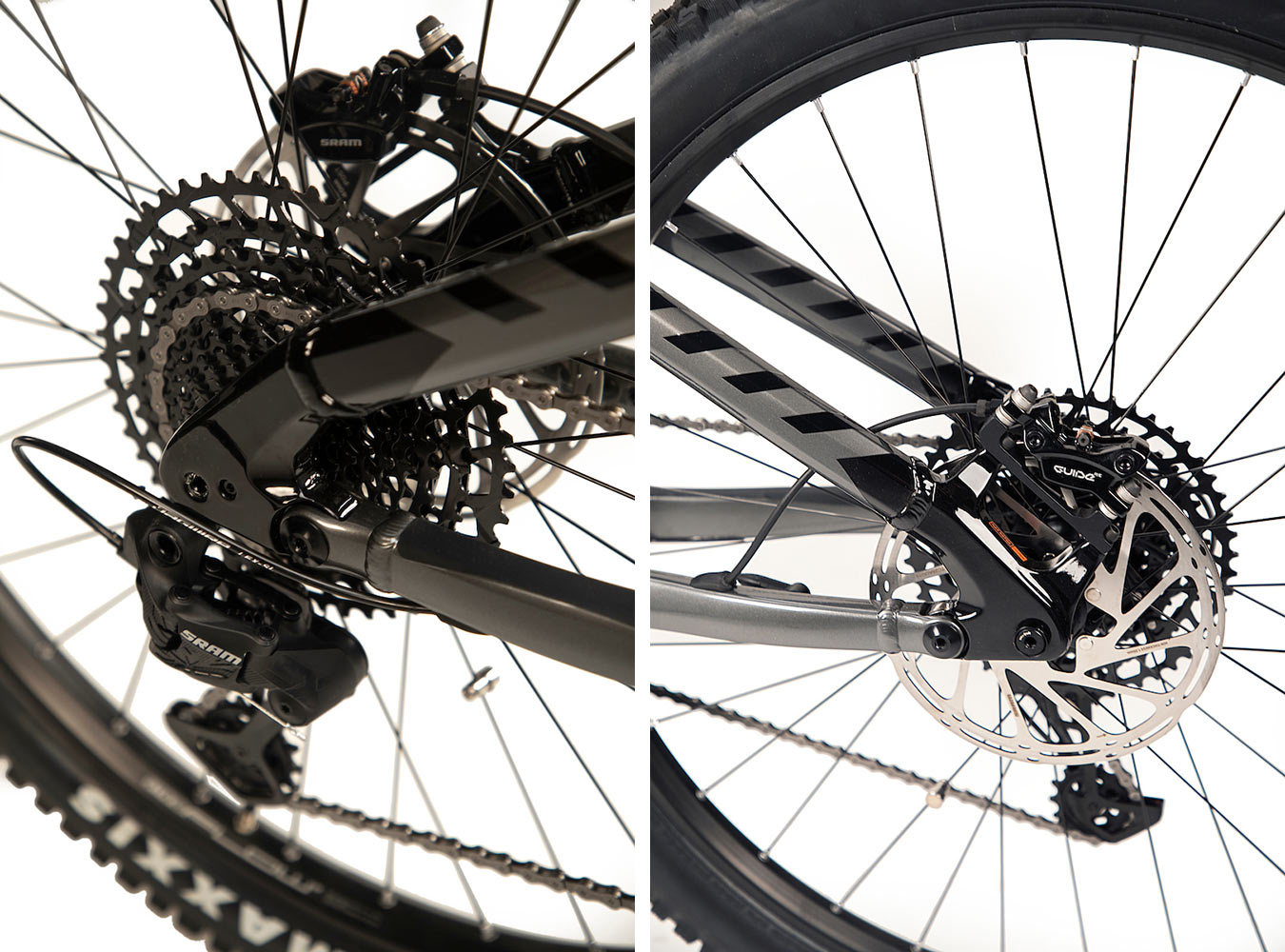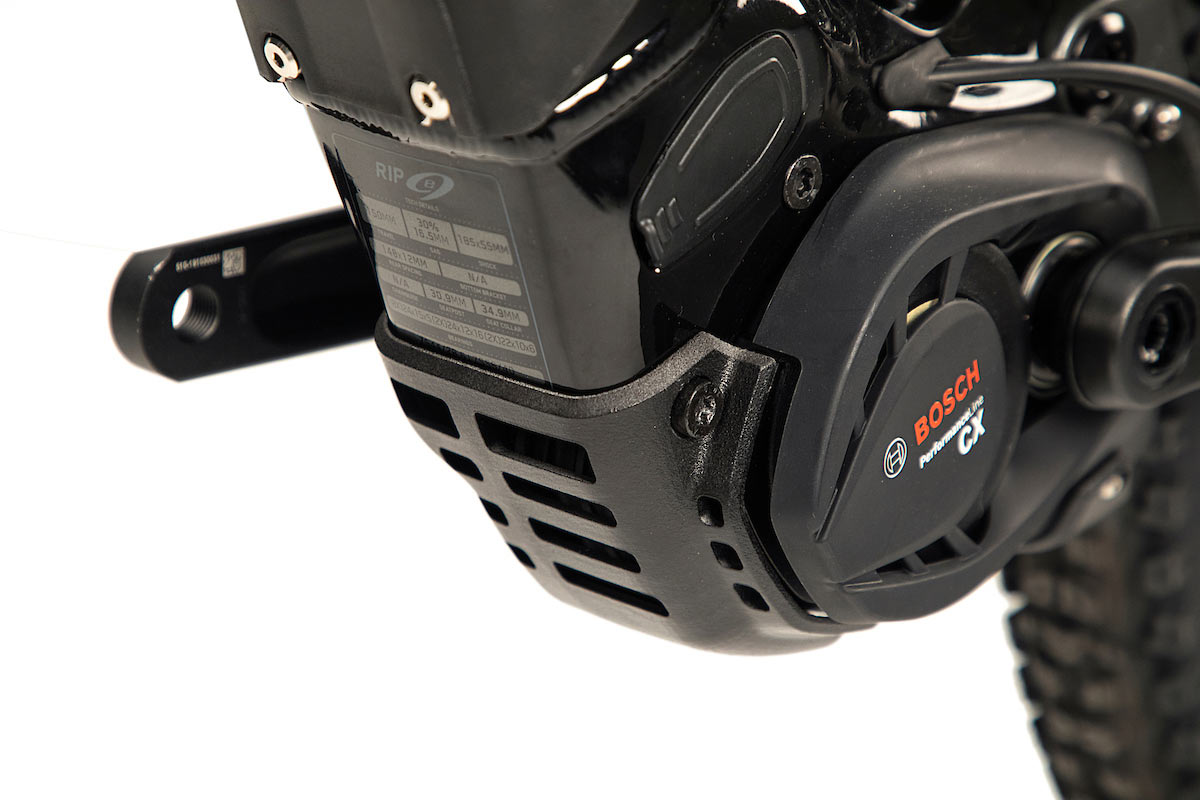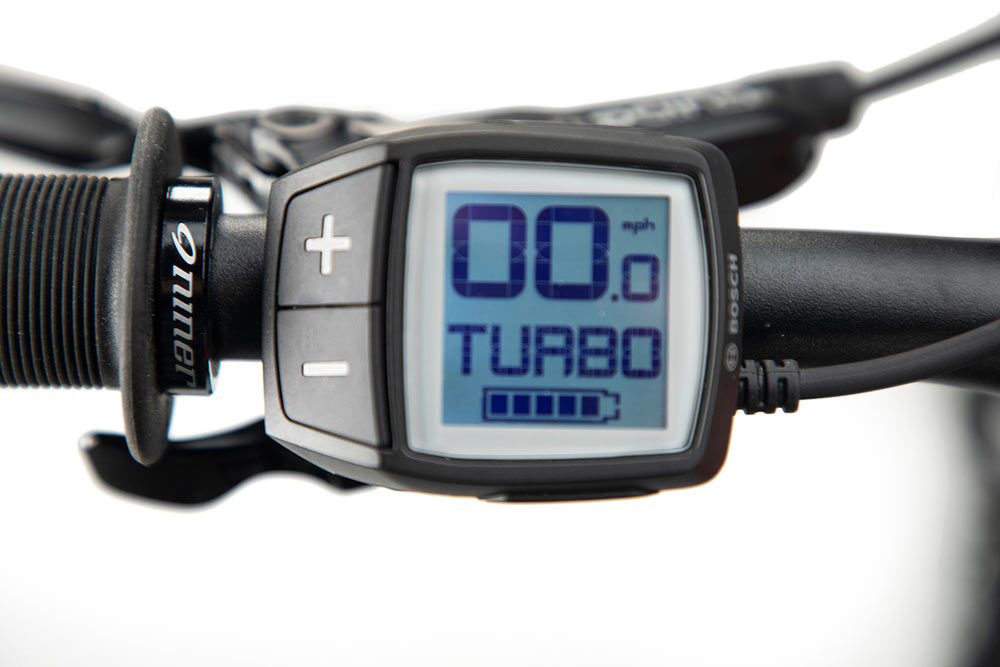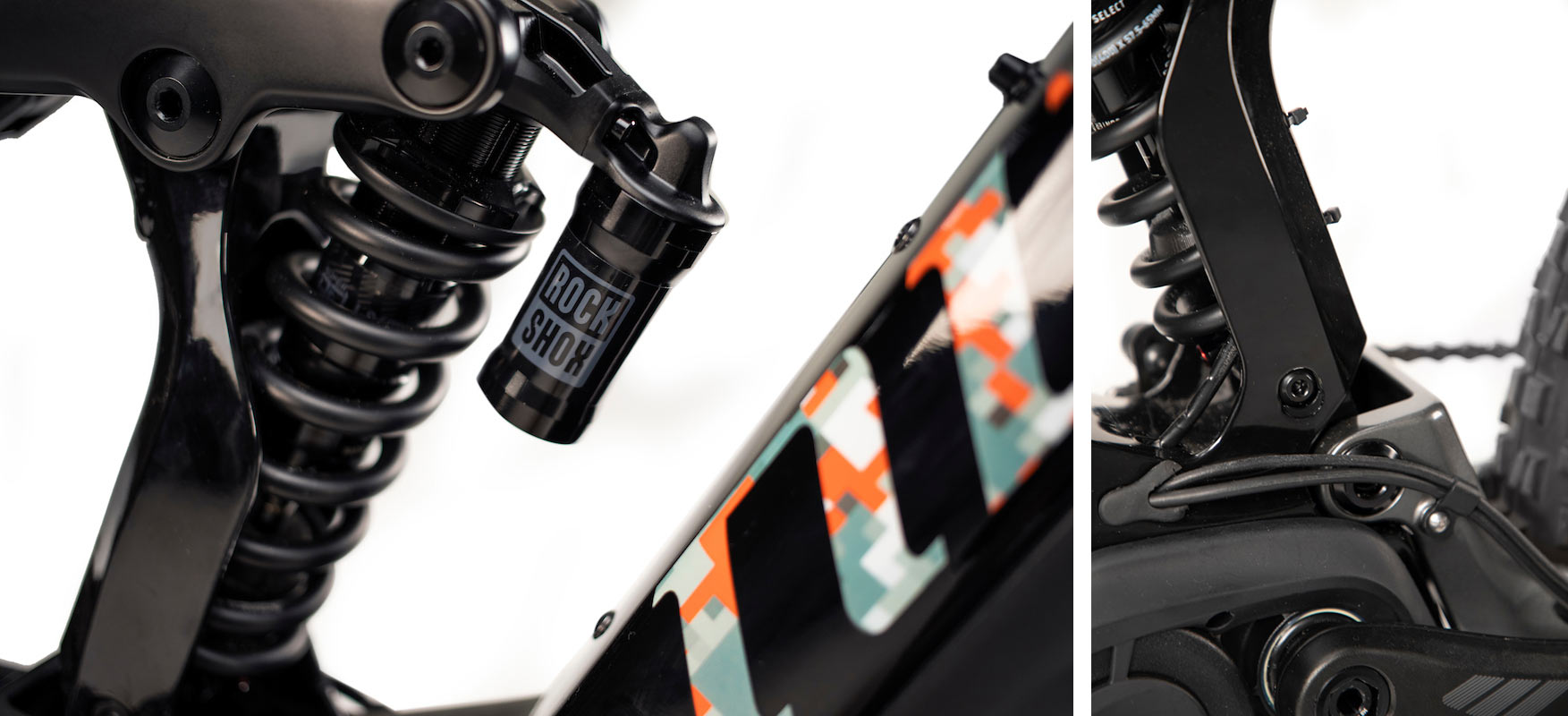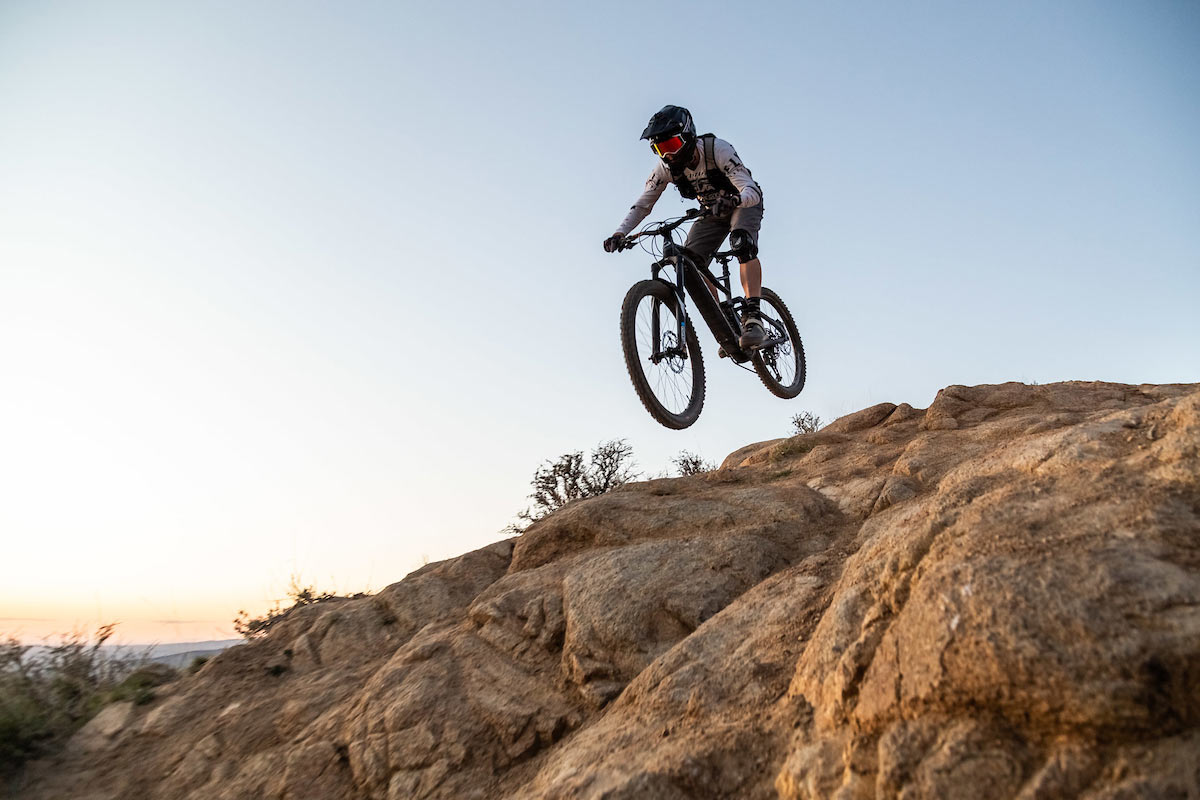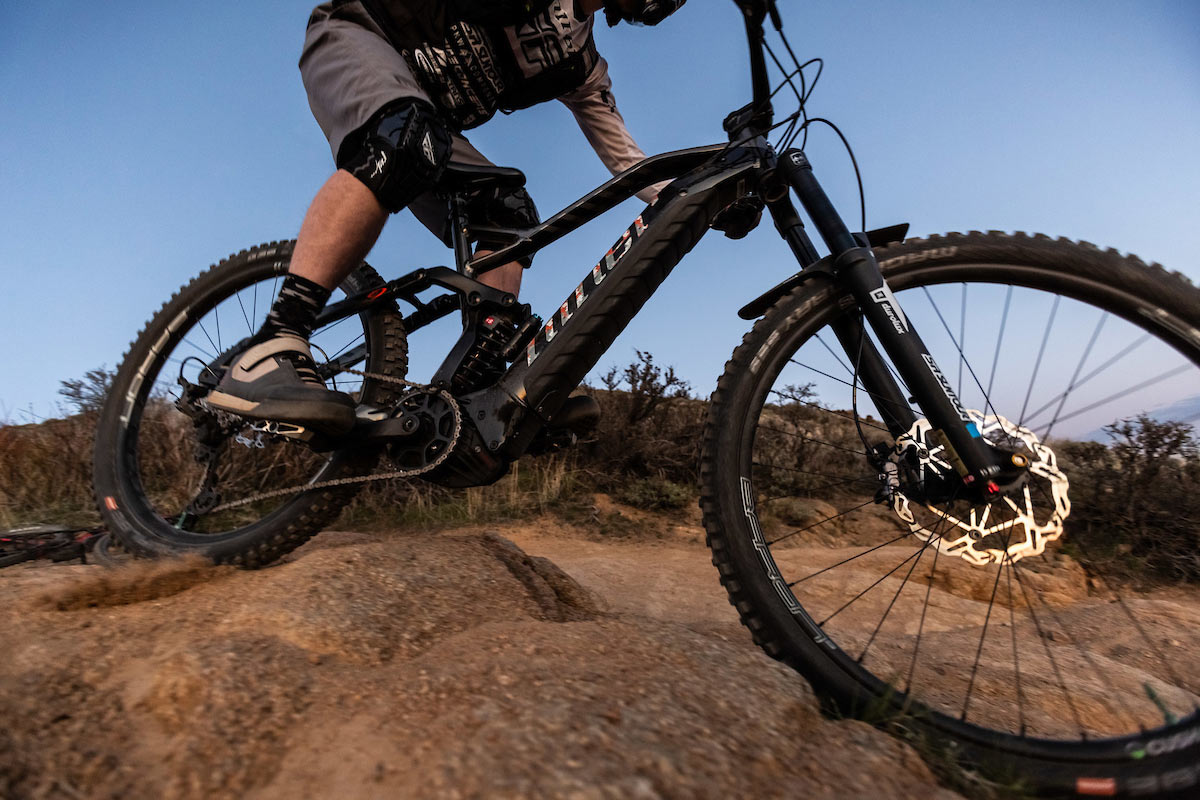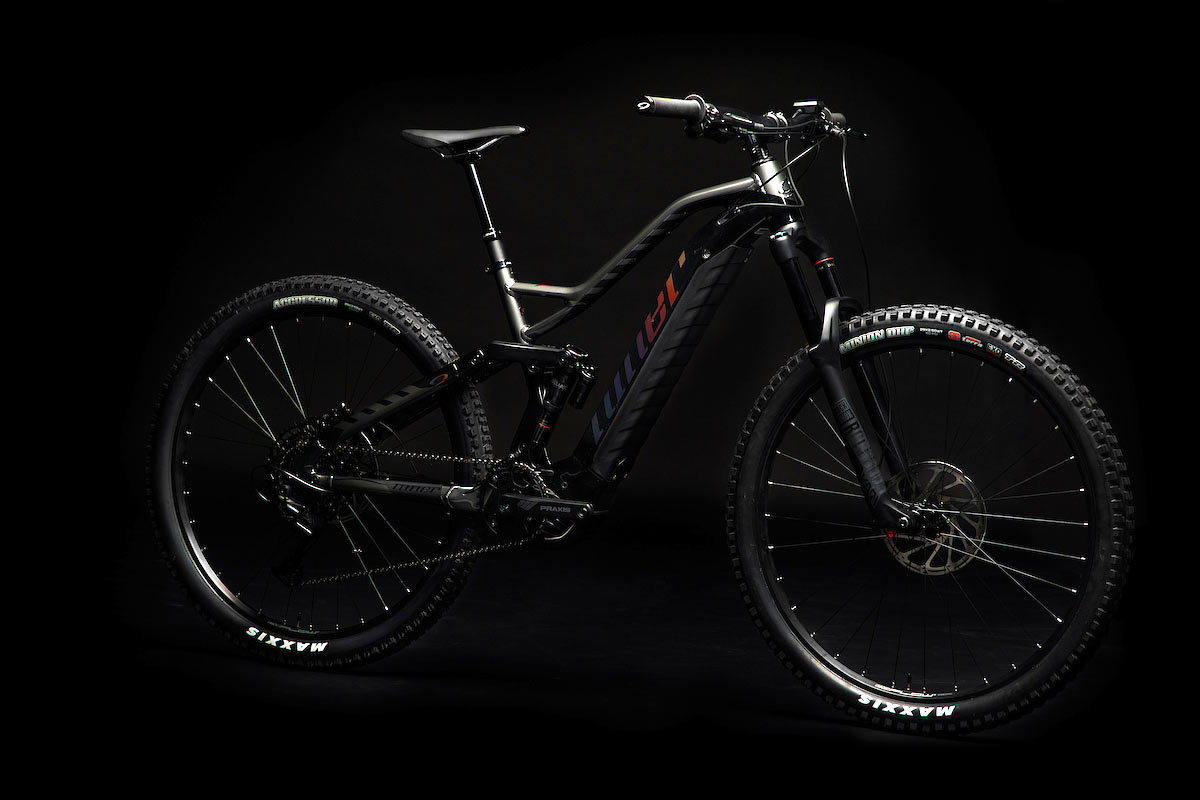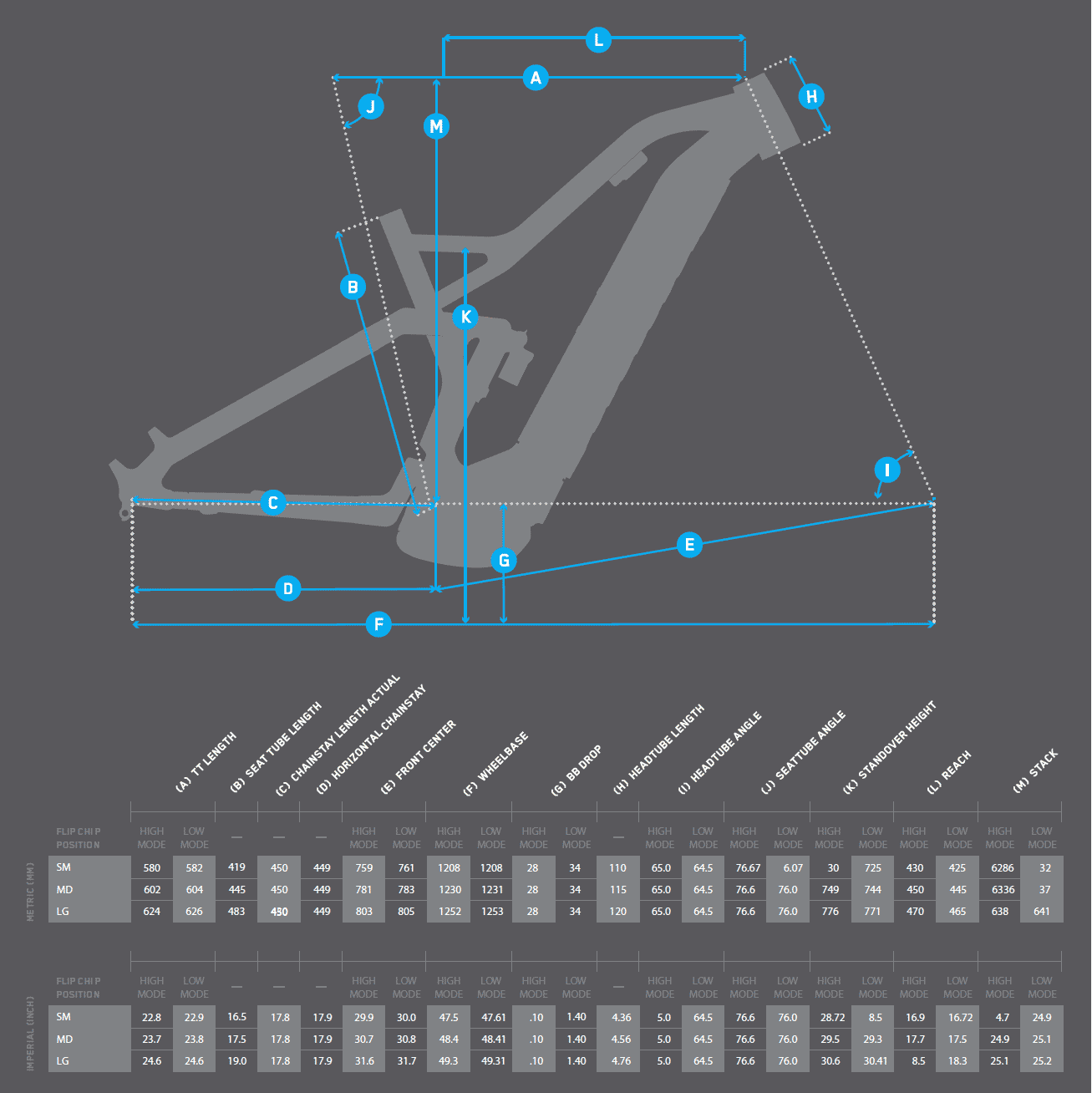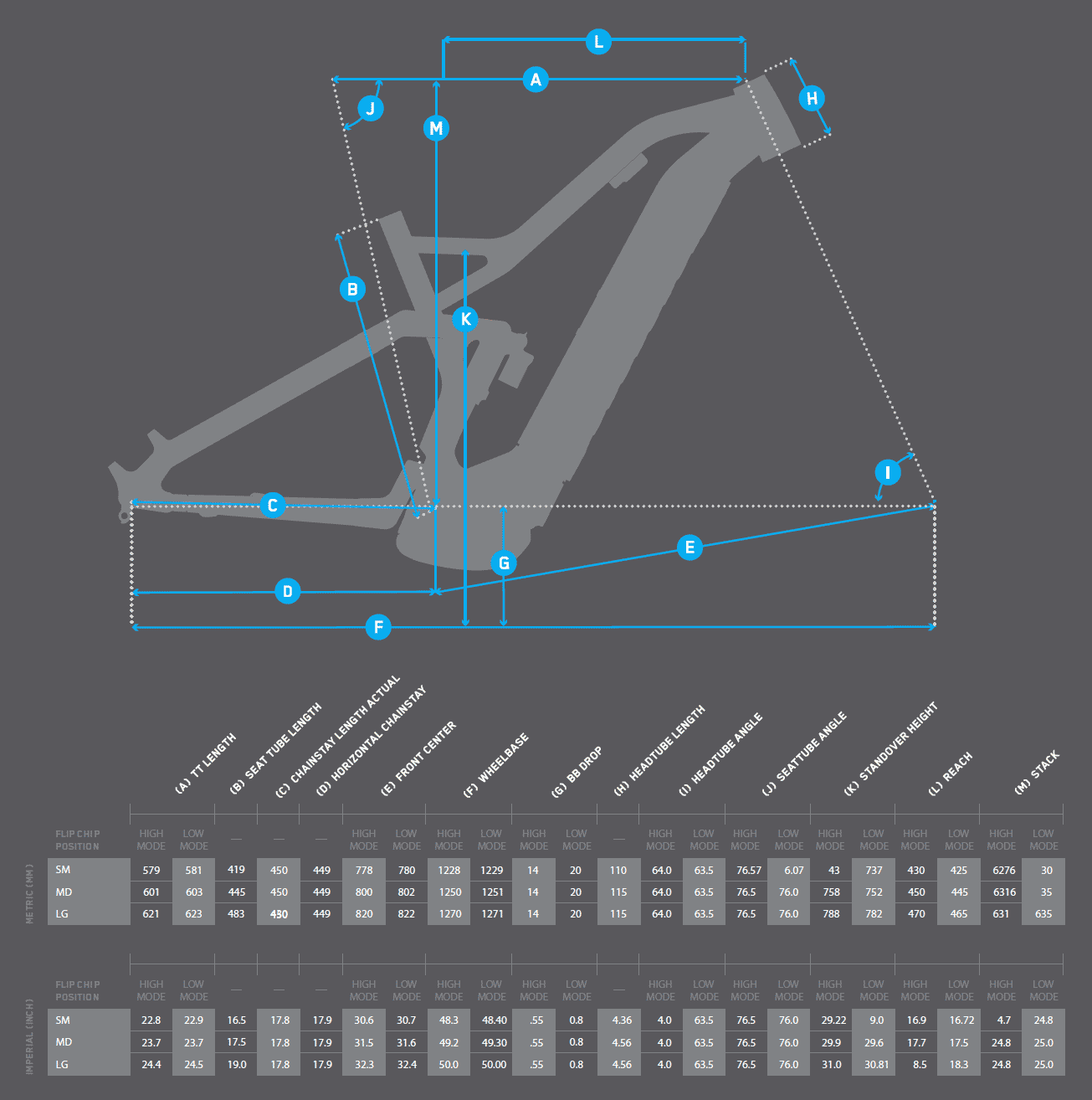Yep, Niner just launched two eMTB’s, and they’re monsters. The all-new Niner RIP e9 gets 150mm rear wheel travel, paired to a 160mm fork, giving it 10mm more travel than its analog counterpart. The WFO e9, which reboots their biggest travel family member, jumps to a whopping 180mm of travel and mixes the wheel sizes for all-out downhill performance…that can climb.
Both use the latest generation of Bosch e-mountain bike motors, and share a similar 6061 alloy frame. But they get an all new (for Niner) suspension design to make the most of the hill-flattening torque coming from the motor. Here’s everything you need to know…
2021 Niner RIP & WFO eMTB tech details
While the two bikes do have different frames, they’re very similar other than shaping and geometry to handle the different travel. Both bikes use a 6061 aluminum frame with massively oversized downtube.
That leads into a one-piece cast, CNC’d motor mount holding the 4th generation Bosch Performance Series CX drive system. It delivers up to 340% of your effort, with a stock 75Nm of torque. Bosch’s latest update (available through a local dealer after purchase) pushes the output to 85Nm of torque, powered for hours with a 625wH PowerTube battery pack.
The bikes ship as Class 1, meaning a 20mph max assist for the US (25km/h for EU markets), good for an average 50mi (80km) range per charge.
That leads into a forged chainstay yoke, using widely spaced bearings just above the motor.
A forged seatstay yoke is linked to a forged rocker arm, and all of those points rotate on Niner’s Black Oxide bearings. Even the upper shock’s trunnion mounts rotate on these bearings…which they say is a big deal because that location sees up to 30º of rotation, so bearing give it a much smoother movement for better small bump performance.
The bearings out back use a stiff, wide connection point that looks far more robust than what we see on non-electric assist bikes. The point? To make this frame as stiff and strong as possible to handle the extra power.
The motor is protected with a vented bash guard, and a sticker just above it lists all of the bike’s specs, suggested sag and other handy information.
Above that is the removable battery cover. Three bolts remove that, then you’ll need the included key to swap the battery.
It’s all controlled by the Bosch Purion control unit, which has a power button top and a Walk Assist button on the bottom. Four modes (Eco, Tour, new eMTB, and Turbo) give you plenty of control over the assist level and battery life.
The WFO gets spec’d with coil shocks, the RIP with air shocks. Both get a two-position “flip chip” lower shock mount that lets you adjust the bike’s ride height and angles between Low and High. Full geometry charts down below to show how they affect the layout.
Why not use Niner’s CVA suspension for an e-bike?
Mainly, because the engineering challenges of using their CVA’s lower-link-under-the-bottom-bracket-design was an engineering challenge not worth solving on a bike with a motor. Niner’s patented CVA works amazingly well on bikes you have to pedal without any assist. But when you add a motor at the bottom bracket, it takes up a lot of the space that their lower link would fit into. And, if we’re being honest, the longer the travel, the harder it is to make that design work without running into ground clearance issues. But we’re getting sidetracked…
Basically, suppleness and traction outweighed anti-squat and pedaling support suspension performance. And a four-bar, Horst Link design can do that quite well, is easily tunable to get the suspension characteristics they wanted, and it fits just fine around a motor.
Niner’s rep summed it up thusly: “For a bike that’s generating 85Nm of torque, it’s better to get all that power to the ground.”
2021 Niner RIP e9 e-mountain bike
The new Niner “e-RIP” gets 150mm rear travel with a 160mm fork. It’s running 29er wheels front and rear and, for our money, seems to be the more practical bike of the two.
Quick specs include:
- 2.6″ max tire size
- 160mm max fork travel, 150mm rear travel
- 36t max chainring
- Internal cable routing
- 176mm Q-factor
- Boost axle spacing (12×148 rear / 15×110 front)
- 1 water bottle cage mount inside front triangle
Click to enlarge the geometry chart. Key numbers are a 65º/64.5º head angle (High/Low), and 76.6º/76.0º seat angle. The bikes come in Small, Medium and Large sizes.
eRIP Pricing & Specs
At launch, they’ll offer a 3-Star build for $5,995 that gets a Rockshox Yari RC fork and SuperDeluxe Select+ rear shock, SRAM SX Eagle w/ single-click e-MTB shifter, Praxis eMTB cranks, Stan’s Flow D wheels, Maxxis tires, and KS dropper seatpost.
2021 Niner WFO e9 e-mountain bike
The new Niner “e-WFO” bumps up to 180mm travel front and rear, but slots in a smaller 27.5″ rear wheel to create a “mullet” setup. More and more brands are doing this (Euro e-MTB brands have been doing it for years).
Niner says you can run a dual crown fork on it, but they strongly recommend maintaining the stock axle-to-crown height of 594mm. They say putting a Fox 40 29er fork with 190mm travel would have a 589mm A-to-C height and would work. But forks with more travel than that, specifically the 203mm Fox 40 and 200mm Rockshox Boxxer, are a no go.
Other than the suspension travel, all bullet point specs from the eRIP carry over here, too.
eWFO Pricing, Specs & Geometry
The WFO’s head angle gets a little slacker at 64º/63.5º (High/Low setting), and both bikes get a reasonably short 450mm chainstay length. Even though it has a smaller 27.5″ rear wheel, they say the WFO maintains the same chainstay length in order to enable the longer travel.
The WFO e9 will retail for $6,295 and gets a Rockshox Yari RC 180mm and SuperDeluxe Coil shock, with an otherwise similar build as the RIP e9.
What’s next? Carbon frames? e-Gravel bikes?
Niner says they went with aluminum frames for these bikes to help keep the prices down. Their athletes say the alloy frames also provide a nicely tuned ride and better sound damping for the motor than carbon would.
With a complete bike weight around 55lbs for the Large RIP e9, the motor is plenty capable of moving it along just fine. But, we have to imagine if there’s uptake on these, they’ll want to make something lighter eventually.
Within the tech docs provided with the press release, Niner says they’ve been involved with Bosch since 2009, just waiting for the right time and product mix to “focus attention simultaneously on both gravel and eMTB while fully exploiting the benefits of Bosch’s newest, 4th generation motor.” Read into that what you will…
Check out the full review of the new Niner RIP e9, with video!
